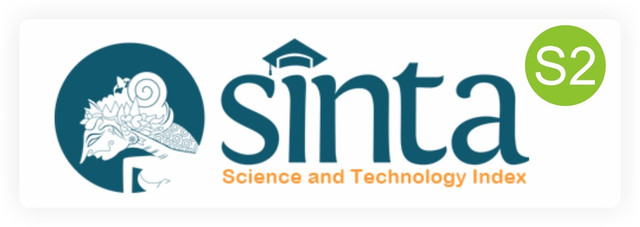Consumer Preference for Mid-Cost Housing Based on Their Social Stratification in Special Region of Yogyakarta
Abstract
In Special Region of Yogyakarta, housing backlog is caused by supply and demand gap for mid-cost housing, limited capacity of developers, and low housing affordability for low-income people. This research aims to analyze the influence of social stratification on consumer preference for mid cost housing on housing developments and on non-clustered housing areas as well as the desired attributes of mid-cost housing. This research employed descriptive and inductive statistics with chi square test. Purposive sampling was employed with a sample size of 220 respondents were collected through interviews, questionnaires, observations, and literature review. The result show social stratification influences consumer preference for mid-cost housing on both areas. The desired attributes included location, physical characteristics, legal documents, neighborhood, and amenities. It is important for the local government to implement relevant policies and mortgage financing policies as well as provide supporting infrastructure and facilities for its development to ensure residential areas contribute to regional development.
References
Opoku, R. A., & Muhmin, A. G. A. (2010). Housing Preferences and Attribute importance among low income consumers in Saudi Arabia, Habitat International, Vol. 34, Issue 2, pp. 219-227 Patwardhan M., Flora P., & Gupta A. (2010). Identification of Secondary Factors that InfluenceConsumer’s Buying Behavior for Soaps and Chocolates, The IUP Journal of Marketing Management,Vol. IX, No. 1 & 2. Peter, Paul J., Olson Jerry C., (2013). Perilaku konsumen dan Strategi Pemasaran, Edisi 9, Salemba Empat, Jakarta Pudjiwidyastuti, Anggun1, Setijanti, Purwanita2, and Ratna. S., Happy3. (2016). Residential Attributes for Housing Preferences on Suburban Area. International Journal of Engineering Research & Tecnology. Vol. 5. Issue 01. P. 477-484 Prayoga, I. N. & Esariti, L. (2011). “Pengaruh Gentrifikasi Terhadap Pertumbuhan Kawasan Tembalang Sebagai Permukiman Pinggiran Kota Semarang”. Undergraduate Thesis, Universitas Diponegoro Putri A., Setijanti, Purwanita, and Faqih, Muhammad. (2016). Consumer’s Decision Making to Invests on Condominium and Housing at East Surabaya. International Journal of Education and Research. Vol. 4. No. 1. P. 111-122 Rahardi, Raden A., Rahmawati D., Fitrianda S., and Handayani, Alfita P. (2021). Millennials Residential Preferences in Indonesia During The Covid-19 Pandemic. South East Asia Journal of Contemporary Business, Economics and Law. Vol. 24. Issue 2. P. 43-53 Sugiarto (2019). Penerapan Metode Topsis untuk Pemilihan Perumahan. Jurnal Teknik Komputer AMIK BSI. Vol. 7. No. 2. P. 176-180. [online]. http://ejournal.bsi.ac.id/ejurnal/index.php/jtk Sukereman A1., Rosman, Hasniza. S2., Ismail, Suhana3, Faisal, Raja. F.R4., dan Berahim, Nur5. (2021). Determinant Factors Influencing Housing Affordability Among Bumiputera Youths in Klang. Journal of The Malaysian Institute of Planners. Vol. 19. Issue 4. P. 48-61 Subagyo, Pangestu dan Djarwanto, (2010). Statistika Induktif, Edisi 5, BPFE, Yogyakarta Tjiputra, Lusia H., dan Sutrisno, Timotius FCW. (2022). Housing Preferences of Full Nest 1 Life Cycle Stage Customers in Response to The Pandemic. Jurnal Ilmiah Bisnis dan Ekonomi Asia. Vol. 16. No. 1. P. 75-94 Triwijayati, A., Melany, Wijayanti, D., & Pradipta, D. B. (2019). The Role of Social Class Vs. Income in The Purchase of Consumer Products in Jawa Timur, Wacana, Vol. 22, No.4 Tsou, Wei-Ling, dan Sun, Chen-Yi. (2021). Consumers’ Choice between Real Estate Investment and Consumption: A Case Study in Taiwan. Sustainability Journal. Vol. 13. No. 11607. P. 1-13 Sugiyono. (2013). Metode Penelitian Bisnis, Cetakan Ketujuh, Alfabeta, CV, Bandung. ------, (2022), Provinsi Daerah Istimewa Yogyakarta Dalam Angka, BPS, Provinsi DIY ------, (2021), Data Strategis Statistik Sosial Daerah Istimewa Yogyakarta, BPS, Provinsi DIY ------, (2011), Undang-undang No. 1 Tahun 2011 Tentang Perumahan dan Kawasan Permukiman ------, (2022), Bagian Hukum dan Komunikasi Publik, Direktorat Jenderal Perumahan, Jakarta.







.png)




